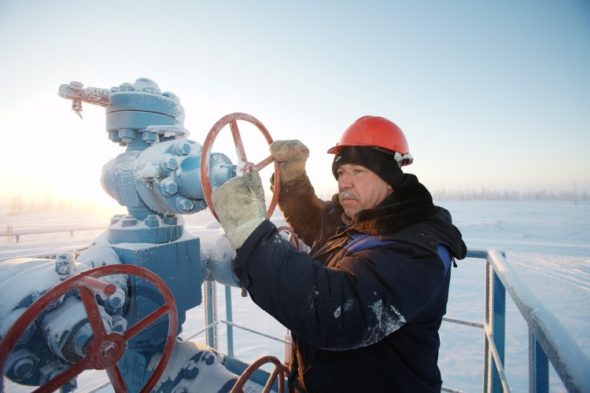Gazprom fulfilled its threats and cut off the supply of gas to Poland and Bulgaria, because companies from these countries did not agree to alter the payment for the supplied gas. But why would the Russians change the currency at all? – asks Mariusz Marszałkowski, editor at BiznesAlert.pl.
Russia rejects hard currency?
People invest in various things. Real estate, gold, deposits, but also currency. The elders know that in difficult times hard currency has always been reliable. Dollars, pounds, once francs or marks, now euros. However, the ruble has never been on this list. Neither the Soviet one nor the modern Russian one. In these difficult times, also for Gazprom, the Kremlin ordered a change. And so in the decree of March 31 on the rules for payment for Russian gas supplied to some customers, Putin ordered Gazprom to accept payment for gas in rubles. Why „some”? Because it’s about countries that are considered hostile. Of the five largest recipients of Russian gas, as many as four (Germany, Italy, Austria, the Netherlands) are members of the European Union, all countries of which were recognized as unfriendly to Russia (Russians entered the entire EU on the list). According to calculations made by RBK, these countries are responsible for USD 43 out of the 54.2 billion of revenue of the Russian monopolist.
So, what are Russians demanding when it comes to the new payment method, which has been already rejected by, among others, Poland’s PGNiG? Well, a company that has an agreement with Gazprom is obliged to open a „K” currency and ruble account, i.e. an exchange account. The letter „K” means „конвертируемыйсчет”. Exchange accounts are special accounts designed for natural and legal entities that do not reside on the territory of the Russian Federation. These accounts can be used when a Russian business sells something to a non-resident. Trading and withdrawing the money is regulated by the instructions of the Russian Central Bank. After setting up a K account with Gazprombank, the energy company transfers the payment in either dollars or euros to the foreign currency account. Then Gazprombank sells the acquired currency on the Moscow exchange, and buys rubles. These funds then go to the ruble sub-account, from which they are sent to Gazprom. This last step closes the transaction.
This is a „compromise” solution in comparison to the earlier one, which forced Gazprom’s clients to make direct payments in rubles. Such a solution would mean these companies would have to buy rubles either on the Moscow exchange, or directly at the Russian Central Bank, on which western sanctions had been imposed. This compromise also allows some companies in the West to justify the opening of ruble sub-accounts in Gazprombank, because formally, they still transfer the payment in the currency from the contract, only later is it converted into rubles already as part of a financial operation carried out by the Russian bank.
This solution formally also does not change anything in the situation of Gazprom in terms of access to the currency. In line with Russian regulations, the company was obliged to exchange 80 percent of the foreign currencies into rubles on the Moscow exchange. Now the company will receive 100 percent of the rubles without the need to conduct exchange operations. However, Gazprom will still have access to the „hard currency”, because it will continue to settle contracts the old way with „friendly” countries, including China and Turkey.
Why change the formula?
Russian government circles, of course, do not disclose the real reasons for this decision. In a sense, it is aimed „internally”, that is, at the Russians themselves. It is about the message that the „rotten West”, dependent on Russian gas must pay in Russia’s national currency. From the point of view of Russian propaganda, this is a very welcome „direction”. After all, the quip attributed to Lenin says that the capitalists (the West) will sell us (Russia) the rope on which we will hang them. Now, however, it is Russia that has been selling the energy rope (in the form of various energy projects that depend on its fossil fuels) for years, which many capitalists in Europe have been happy to buy.
From a practical point of view, this change is somewhat forced by sanctions imposed on the Russian financial sector. At the beginning of the conflict in Ukraine the rubel plunged. The Russian Central Bank had to intervene, sell the „currency” and buy rubles on the stock exchange. However, the sanctions imposed on the Central Bank blocked its access to the currency, which undermined its ability to intervene to stabilize the ruble. Forcing western businesses to participate in transactions performed in the Russian bank, which carries out purchases on the Russian stock exchange, leads to an increased flow of assets and thus the strengthening of the ruble. It is difficult to estimate the final impact of this move on the ruble exchange rate, but we can already see a big change. At the time of signing the decree, March 31, 2022 one dollar cost 103 rubles. After the signing of the decree, the exchange rate dropped to 97 rubles. On April 29, a little less than a month after the introduction of the decree, the exchange rate is already 71 rubles, which is the highest since… November 2021.
Another reason for the decision to force businesses to participate in ruble transactions via Gazprombank could be the need to protect this entity against western sactions. This bank has been dubbed „sanctions-proof” because of its role in brokering the Russian gas trade. Sanctions imposed on this institution will make the conduct of financial transactions, including deposits and currency conversion, illegal. Of course, Gazprombank does not deal only with gas, but it is this function that makes it feel relatively safe both when it comes to gas transactions and all other transactions. This, in turn, gives comfort to the Central Bank, which in this way can still control, to a degree, the exchange rate of the Russian currency.
The third element beneficial from the perspective of Russia is the security of the money paid by Gazprom customers. Increasingly, there are voices calling for the creation of a special fund to which money would be paid as part of the debts to Gazprom. These funds would be held in an account from which Gazprom could withdraw only enough money to continue its day to day business. Anything above that, i.e. money that would go to the Russian budget, would be frozen. Gazprom is afraid of its assets and money being frozen, so from its perspective it is beneficial to „get ahead” of the West and create a „safe” financial haven in some Russian financial institution, which will ensure no payments received from clients will be blocked.
Little economics, lots of politics
From the point of view of the contractors and Gazprom itself, the changes introduced by Putin’s decree are essentially cosmetic, but they give a lot of scope for interpretation. The Russian message is that many Western companies „bowed” to their demand and pay Gazprom in rubles, many European companies in turn say that they continue to pay in euros or dollars and nothing has changed from their perspective. And both sides may be right. However, the problem might be that the decree introduced a regulation that leaves Russians a lot of wiggle room, e.g. it is Gazprombank that will decide and either agree or not to who will be able to set up the bank account, while the Russian Central Bank will determine what rules will govern exchanging the foreign currency into the ruble on the exchange. This, of course, can give rise to future risks for the contractors themselves. It seems that the most important goal, which is to protect Gazprombank from sanctions, has so far been achieved. And this can be seen as a considerable success of the Russians.









